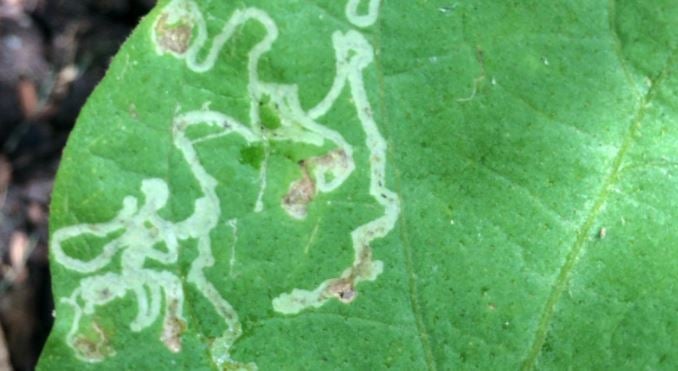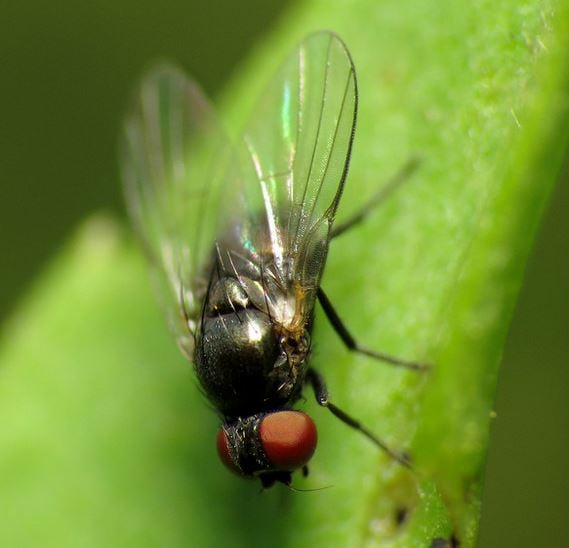Leafminer

Leafminer larvae tunnel between the upper and lower layers of a leaf, producing a visible trail of random, squiggling lines that are usually lighter in color than the leaf itself. These insects attack many vegetable crops, including spinach, beets, lettuce, and tomatoes.

Various types of insects are classified as leafminers. The most common is the larvae of a tiny black fly. These flies lay their eggs on the undersides of leaves. After hatching, the larvae tunnel into the leaf to feed, where they are protected from predators. There are two to three generations per year. Leafminers are found throughout North America.
Prevention and Control
- Leafminer damage is mainly a cosmetic problem; usually no control is needed except on leafy crops such as spinach and lettuce.
- Protect leafy vegetable crops from egg-laying adults by covering them with lightweight garden fabric.
- Search for and remove white leafminer eggs on the underside of leaves. Pick off and destroy infested leaves.
- Keep your garden clear of dock and lamb?s quarters, which are host plants for beet leafminers.
- Encourage parasitic wasps and other beneficial insects that attack leafminers.
Print this Article:
Get the Dirt
Stay up to date on new articles and advice. Please fill out the information below.
